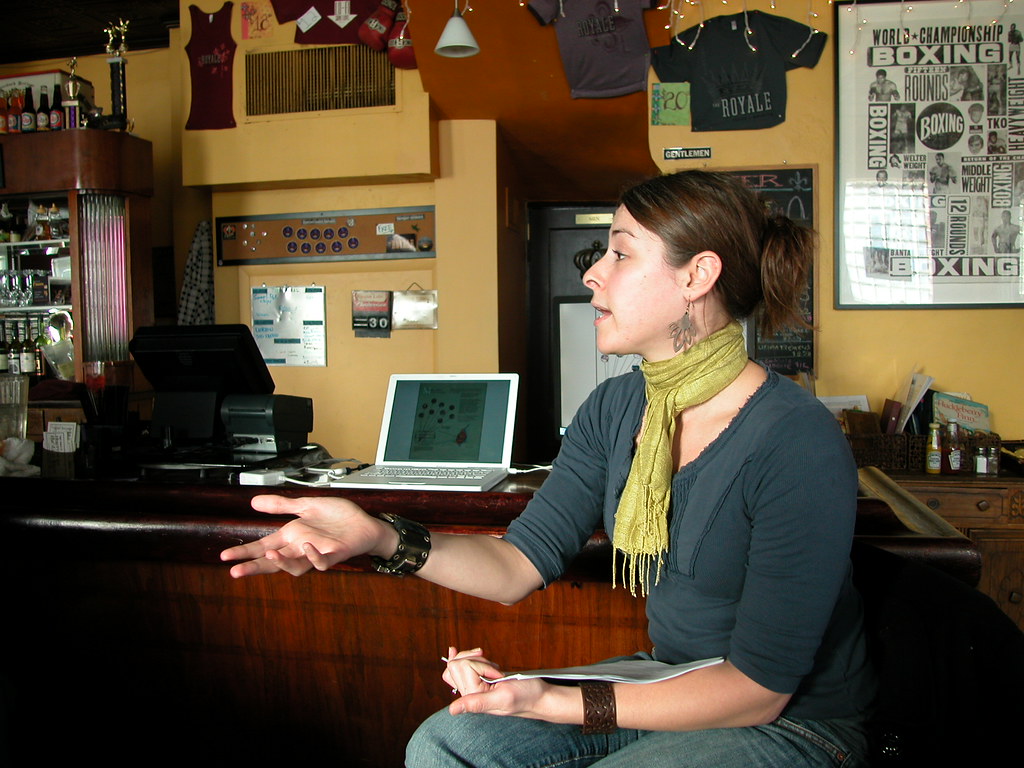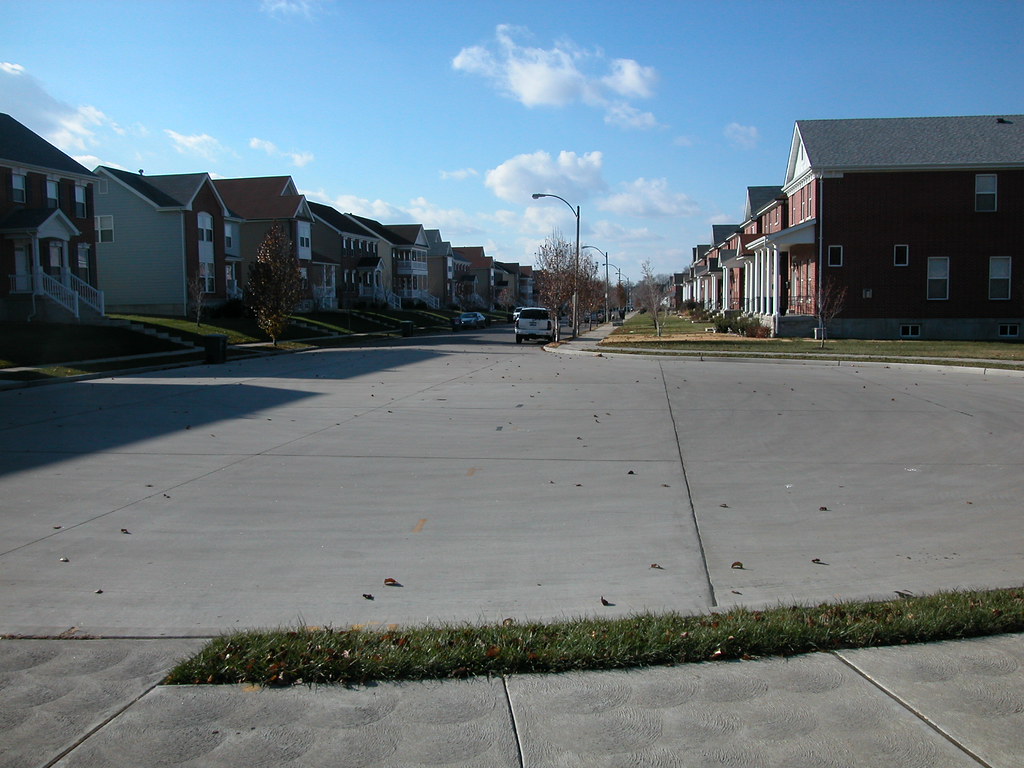
Yesterday afternoon St. Louis University doctoral student Jackie Jones presented her dissertation thesis, "Picturing a Neighborhood: McRee Town in Saint Louis, Missouri," to a crowd at the Royale, 3132 S. Kingshighway. The interesting venue for Jones' presentation and resulting discussion offered a relaxed setting for what remains a controversial topic: the wholesale clearance of six blocks of an urban neighborhood by the Garden District Commision and resulting replacement by new housing. Jones disavowed any stance on the clearance, instead focusing on how images were used to justify the clearance in the press -- and how other images contradict the story told by the Commission's carefully-selected images.
Here's Jones' own description of her presentation:
In 2003, the Garden District Commission demolished more than two hundred buildings on the eastern half of the McRee Town neighborhood in Saint Louis. The Commission, a private coalition headed by officials from the nearby Missouri Botanical Garden, demolished six blocks of historic brick homes and apartment buildings that housed primarily low-income renters and homeowners, relocated hundreds of residents, erected twenty-five acres of market-rate, single-family, suburban-style housing on the cleared land, and ceremoniously renamed the area Botanical Heights. This presentation explores how visual representations of McRee Town between 1998-2003 helped legitimize this urban renewal project and the dislocations it caused in the lives of McRee Town residents. It engages viewers with the photographs of burned-out, boarded-up, weed-infested buildings that populated newspaper reports and public relations documents during these five years, and juxtaposes them with photographs taken by Genevelyn Peters, a McRee Town resident prior to the neighborhood’s destruction. These images – of family, homelife, play, and community – complicate and challenge the dominant understanding of this neighborhood and its residents as criminal and atomized by presenting images that depict a vibrant neighborhood community.

The people present included someone involved in the decision to clear the six blocks, residents of Botanical Heights (the new housing development), the area's Neighborhood Stabilization Officer Luke Reven and others. While I had to leave before discussion was over, discussion touched on the damaging impact of I-44 construction in the early 1970s, the way in which similar images as those taken in McRee Town galvanized Lafayette Square and Soulard residents to pursue preservation instead of clearance, the deceptive nature of photographs and whether or not the term "suburban" applies to Botanical Heights.

On another note, if Royale proprietor Steven Fitzpatrick Smith is attempting to revive the tradition of the discussion salon, count me in!





3 comments:
I like to call Botanical Heights the future Ghetto....New construction doesn't seem to hold the test of years...
That block actually looks a lot better than most reconstructions I've seen.
really sad they didn't rehab existing housing. people like me and probably most who read these boards would NEVER move into a neighborhood like this, but would probably have moved into a rehabbed McCree Town. this area will be torn down again within 30 years. so sad. did we not learn ANYTHING from Mill Creek Valley. goodbye 3 story townhouses...
Post a Comment